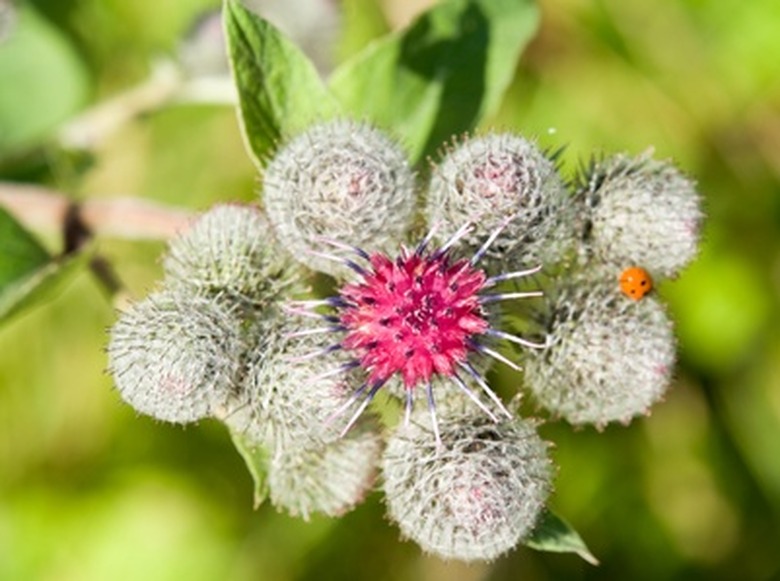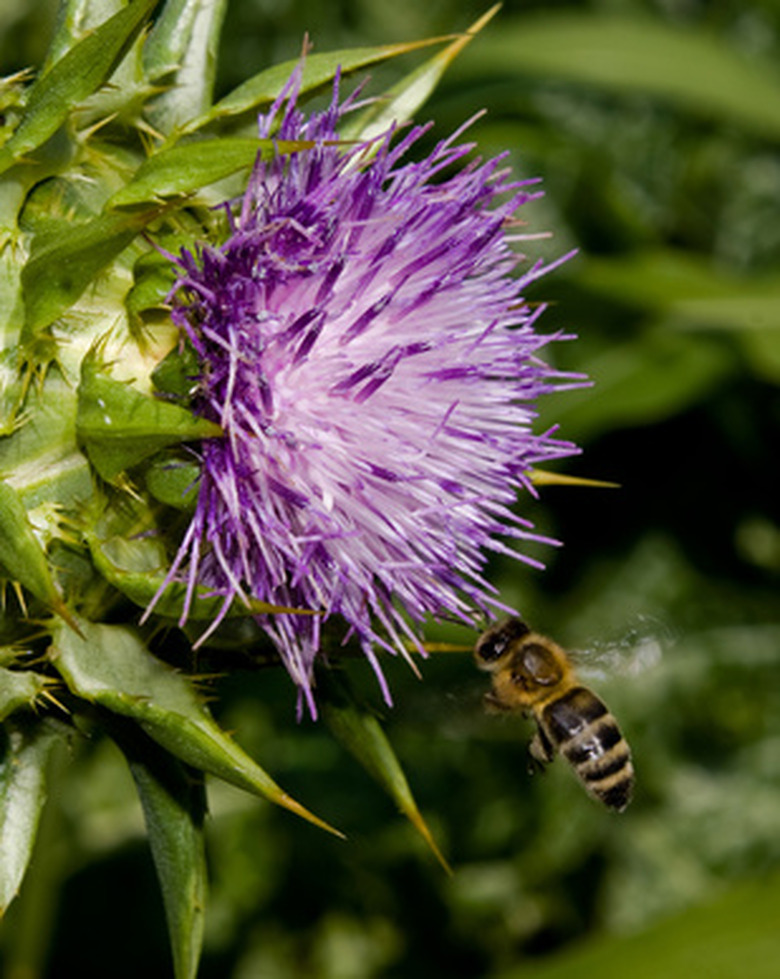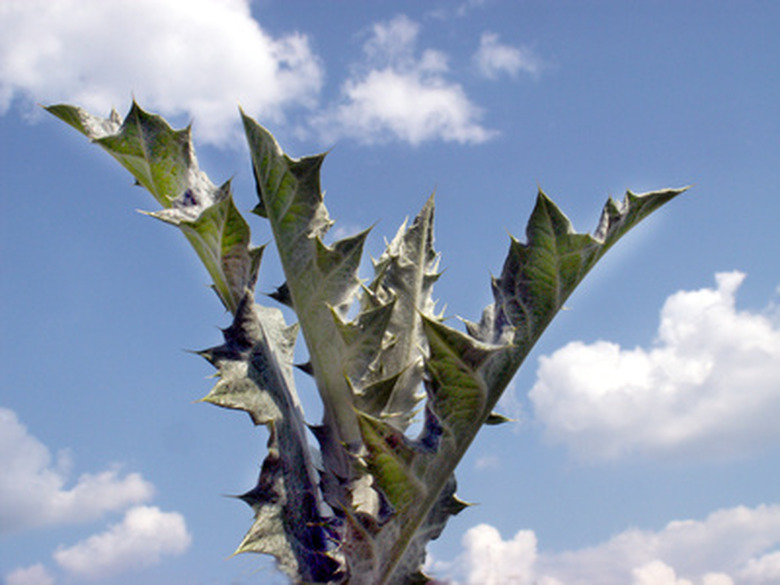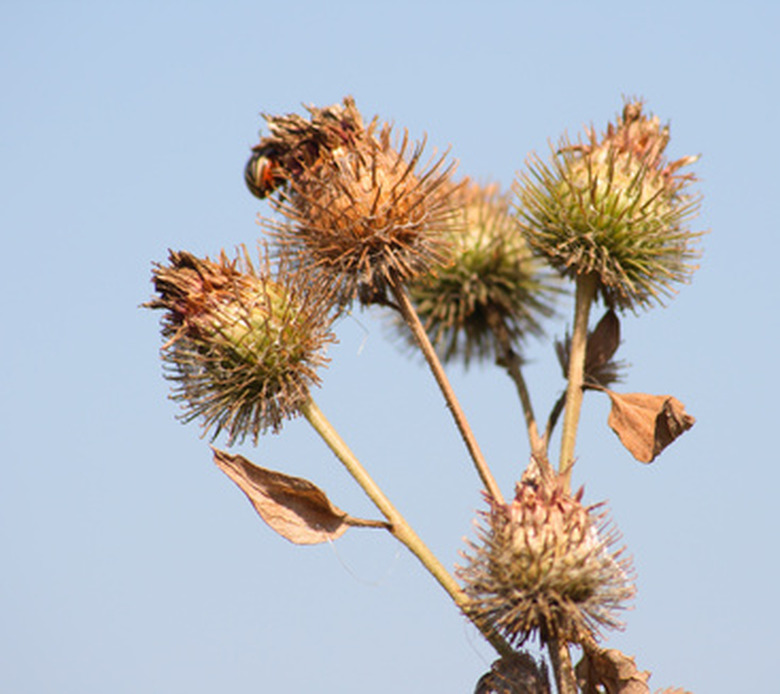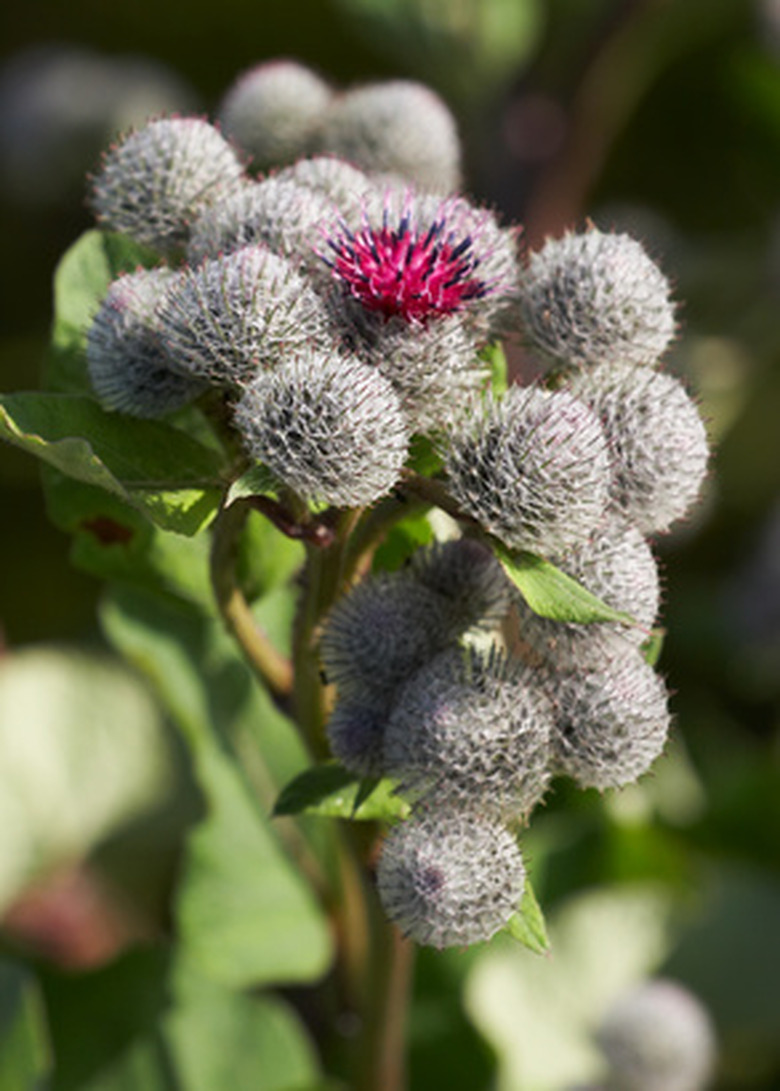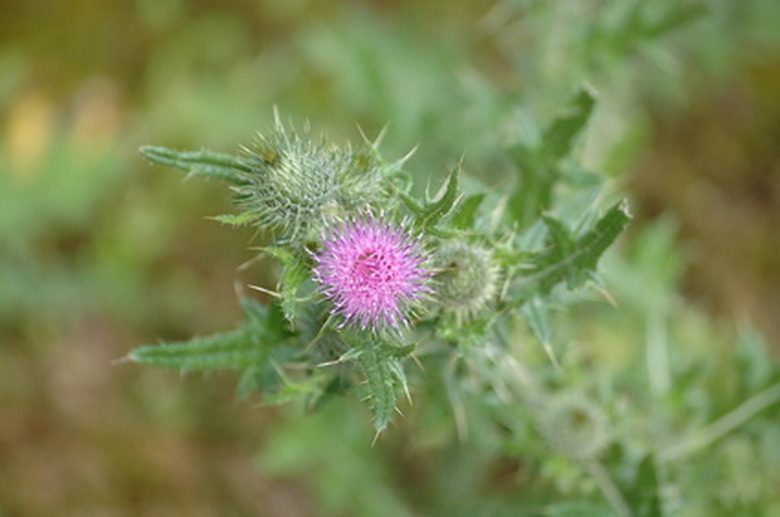Milk Thistle Burdock Identification
The roots, shoots and young leaves of milk thistle (Silibum marianum) are edible and the plant has some medicinal uses. The roots of burdock (Arctium lappa) are a staple of some Asian cuisines. Burdock preparations are widely used in alternative medicine preparations as a laxative and to treat skin conditions. Milk thistle and burdock are both tall, weedy plants with purple tops, but beyond that they are easy to tell apart.
Milkweed Appearance
Milkweed is a biennial thistle that grows 2 to 6 feet tall. The stem is branched but does not have spines. Milkweed produces 2-inch-wide, disc-shaped flowerheads at the end of the stem. These tube-shaped florets are sometimes white but more often are pink to purple. The flower head has broad leathery bracts tipped with stiff spines that are from 3/4 to 2-inches long.
- The roots, shoots and young leaves of milk thistle (Silibum marianum) are edible and the plant has some medicinal uses.
- Milk thistle and burdock are both tall, weedy plants with purple tops, but beyond that they are easy to tell apart.
Milkweed Distinguishing Characteristics
The milk thistle is distinguished by the white marbling or patches found along the veins of its dark green leaves that alternate on the stem; it is this characteristic that gives the plant its "milk weed" popular name. The yellow edges of the leaves are tipped with 1/8 to 1/2-inch long woody spines.
Burdock Appearance
Burdock, a biennial thistle, has a dull, pale green stem that grows 3 to 6 feet tall. The heart-shaped lower leaves are more than 1 foot long; their bottoms are covered with a mass of fine gray down. The smaller, egg-shaped upper leaves have less of the gray down on their undersides. Burdock flower heads expand during late summer and early autumn. The flower heads contain tube-shaped florets with dark purple stamens and whitish stigma.
- The milk thistle is distinguished by the white marbling or patches found along the veins of its dark green leaves that alternate on the stem; it is this characteristic that gives the plant its "milk weed" popular name.
- The smaller, egg-shaped upper leaves have less of the gray down on their undersides.
Burdock Distinguishing Characteristics
Mature burdock flowers are surrounded by bracts that botanists call involucre. The involucre forms burs with hooked prickles that attach themselves to clothing and the fur of animals. The purple flowers are on the top of these burs.
The edible, starchy Burdock roots are about 1 inch thick and grow at least 12 inches deep, sometimes extending 2 to 3 feet deep. They have a gray-brown skin that is about a quarter of the width of the root, and a whitish interior.
Difference in Flowers
Flowers of burdock are borne in clusters at the ends of branches. The flowers of milk thistle are borne individually. Milk thistle does not produce burs.
- Mature burdock flowers are surrounded by bracts that botanists call involucre.
